- Home
- Keith Douglass
Pacific Siege sts-8
Pacific Siege sts-8 Read online
Pacific Siege
( Seal Team Seven - 8 )
Keith Douglass
When a Japanese general goes ballistic and takes over a Russian island, the Seals are sent in to restore justice. But between freeing Russian hostages and making sure not to step on the wrong toes, the Seals find themselves stuck waist-deep in hell — and highwater.
Keith Douglass
Pacific Siege
Special thanks and acknowledgment to Chet Cunningham for his contribution to this book.
SEAL TEAM SEVEN THIRD PLATOON CORONADO, CALIFORNIA
Lieutenant Commander Blake MurdoCk. Platoon Leader. 32, 6‘2”, 210 pounds. Annapolis graduate. Six years in SEALS. Father important Congressman from Virginia. Murdock recently promoted. Apartment in Coronado. Has a motorcycle, loves to fish. WEAPON: H&K MP-5SD submachine gun.
FIRST SQUAD
David “Jaybird” Sterling. Machinist Mate Second Class. Platoon Chief. 24, 5‘11”, 170 pounds. Quick mind, fine tactician. Good with men in platoon. Single. Drinks too much sometimes. Crack shot with all arms. WEAPON: H&K MP-5SD submachine gun. Administrator for the platoon.
Ron Holt. Radioman First Class. 22, 6‘1”, 170 pounds. Plays guitar, had a small band. Likes redheaded girls. Rabid baseball fan, Loves deep-sea fishing, is good at it. Platoon radio operator. WEAPON: H&K MP-5SD submachine gun.
Bill Bradford. Quartermaster First Class. 24, 6‘2”, 215 pounds. An artist in spare time. Paints oils. He sells his marine paintings. Single. Quiet. Reads a lot. Has two years of college. Squad sniper. WEAPON: H&K PSG1 7.62 NATO sniper rifle or McMillan M-87R .50-caliber sniper rifle.
Joe “Ricochet” Lampedusa. Operations Specialist Third Class. 21, 5‘11”, 115 pounds. Good tracker, quick thinker. Had a year of college. Loves motorcycles. Wants a Hog. Pot smoker on the sly. Picks up plain girls. Platoon scout. WEAPON: Colt M-4A1 with grenade launcher.
Kenneth Ching. Quartermaster’s Mate First Class. Full-blooded Chinese. 25, 6‘0”, 180 pounds. Platoon translator. Speaks Chinese, Japanese, Russian, Spanish. Bicycling nut. Paid $1,200 for off-road bike. Is trying for Officer Candidate School. WEAPON: Colt M-4A1 rifle with grenade launcher.
Harry “Horse” Ronson. Electrician’s Mate Second Class. 24, 6‘4”, 240 pounds. Played football two years at college. Wants a ranch where he can raise horses. Good man in a brawl. Has broken his nose twice. Squad machine gunner. WEAPON: H&K 21-E 7.62 NATO round machine gun.
James “Doc” Ellsworth. Hospital Corpsman First Class. 25, 5‘10”, 160 pounds. One year pre-med, then he ran out of money. Prefers small dark-eyed girls. Single. Competition shooter with pistol. Platoon corpsman. WEAPON: H&K MP-5SD/no-stock, 5-round Mossburg pump shotgun.
SECOND SQUAD
Lieutenant (j.g.) Ed DeWitt. Leader Second Squad. Second in Command of the platoon. From Seattle. 30, 6‘1”, 175 pounds. Wiry. Has serious live-in woman. Annapolis grad. A career man. Plays a good game of chess on traveling board. WEAPON: The new H&K G-11 submachine gun.
Al Adams. Gunner’s Mate Third Class. 20, 5‘11”, 180 pounds. Surfer and triathlete. Finished twice. A golfing nut. Binge drinker or tee-totaler. Loves the ladies if they play golf. Runs local marathons for training. WEAPON: Colt M-4A1 with grenade launcher.
Miguel Fernandez. Gunner’s Mate First Class. 26, 6‘1”, 180 pounds. Has a child with a woman in Coronado. Spends his off time with them. Highly family-oriented. He has family in San Diego. Speaks Spanish, Portuguese. Squad sniper. WEAPON: H&K PSG1 7.62 NATO sniper rifle.
Colt “Guns” Franklin. Yeoman Second Class. 24, 5‘10”, 175 pounds. A former gymnast. Powerful arms and shoulders. Expert mountain climber. Has a motorcycle, and does hang gliding. Speaks Farsi and Arabic. WEAPON: Colt M-4A1 with grenade launcher.
Les Quinley. Torpedoman Third Class. 22, 5‘9”, 160 pounds. A computer and Internet fan. Has his own Web page. Always reading computer magazines. Explosives specialist with extra training. WEAPON: H&K G-11 with caseless rounds, 4.7 mm submachine gun with 50-round magazine.
Rodolfo “RG” Gonzalez. Damage Controlman First Class. 26, 5‘10”, 180 pounds. Loves to surf, prays for a storm for better waves. Is Second Squad’s tracker. Speaks Spanish, Italian, and Russian. WEAPON: Colt M-4A1 with grenade launcher.
Jack Mahanani. Hospital Corpsman First Class. 25, 6‘4”, 240 pounds. Tahitian/Hawaiian. Expert swimmer. Bench-press 400 pounds. Once married, divorced. Top surfer. Wants the .50 sniper rifle. WEAPON: Colt M-4A1 with grenade launcher. Replacement for Gonzalez after he’s shot up in Iraq on the first phase of this mission.
Joe Douglas. Quartermaster First Class. 24, 6‘1”, 185 pounds. Expert hand-to-hand and unarmed combat. He’s an auto nut. Rebuilds classic cars. Working on a 1931 Model A Ford Roadster. Platoon’s top driver, mechanic. WEAPON: H&K 21E 7.62 NATO round machine gun. Second radio operator.
Fred Washington. Engineman Second Class. A black man. 24, 6‘0”, 180 pounds. Is driven to succeed. Taking Computer College Courses. Doesn’t carouse much. is writing a novel about the SEALS. WEAPON: H&K MP-5SD submachine gun.
Third Platoon assigned exclusively to the Central Intelligence Agency to perform any needed tasks on a covert basis anywhere in the world. A Top Secret classified assignment.
1
Tuesday, 9 January
33,000 Feet Altitude
Near Kuwait Border
Newly promoted Lieutenant Commander Blake Murdock watched his fifteen men in the murky gloom of the interior of the special C-130 Hercules. They were flying at night near the northern Kuwaiti border next to Iraq, too high for anyone on the ground to see or hear the plane. This area was outside the Iraq radar envelope.
The Hercules was the one they had used before, painted totally black with no insignia, armed and equipped specifically for covert night flights over hostile territory.
Murdock patted the side of the big plane. He knew it was the most versatile and widely used military transport in the post-World War II era. The four big turboprop engines growled away outside. He’d heard that a C-130 had even been flown off a Navy carrier without the use of a catapult or arresting wires. The plane had a 133-foot wingspan, which made Murdock wonder how they did it. Right now they were flying at the plane’s ceiling of 33,000 feet.
The big plane lumbered through the thin air at 350 mph as the sixteen SEALs rattled around in the big cargo compartment. The Third Platoon of SEAL Team Seven, based in Coronado, California, under command of NAVSPECWARCOM, Naval Special Warfare Command, was now assigned to and under the direct orders of the CIA. Murdock began inspecting each of his first squad’s seven men. They had checked the rigging, gear, weapons, and combat vests of each other. Now Murdock went over it all again, then had two men look over his latch-up. When he was satisfied, he saw that Lieutenant (j. g.) Ed Dewitt had given his seven-man Second Squad a similar routine.
“When the fuck we going to get there?” Engineman Second Class Fred Washington asked. He was the only black man in the group, and confessed he sometimes felt like the platoon’s “Nominal Nigger.”
“Hell, I can say that, but you shitheads better not,” he had said during late-night drinking binges.
“We get there when we get there, Slowfoot,” Les Quinley cracked.
He was a Torpedoman Third Class, from Maine, and the platoon’s computer expert.
Even though they had made jumps like this dozens of times, each one was new and different, and presented the ever-present dangers of any jump.
Murdock looked at his watch, and punched the light button. In the glow he saw that they had fourteen minutes to their drop point. They had been sucking oxygen from masks provided in the plane ever since they passed fifteen thousand feet. He motioned the men around him, talking loudly so they could hear.
/> “Nothing new from the top. We go in as we planned. Let’s stay within fifty feet of each other on the drop, and pull up when we get down there for an easy landing. We don’t want any broken legs or sprains on this jump. Any questions?”
Bill Bradford, Quartermaster First Class, waved. He was a hulking six-two, and did marine oil paintings in his off time. “When do we start to use our portable oxygen?” He was the new man in the platoon, taking over Magic Brown’s spot after the machine gunner had been knocked out of action in the Deathrace operation in Iran.
“We’ll turn on our personal oxygen system in about three minutes, as soon as the red jump light goes on,” Murdock said. “That will put us ten minutes from our jump point. We have two hours of oxygen in each bottle, which should be plenty.”
“How long to touchdown?” Ron Holt, Radioman First Class, asked.
Holt was a rabid Dodgers fan. When baseball wasn’t on, he’d rather go deep-sea fishing than eat.
“We jump on this HAHO at about thirty-two thousand. We’ll be on static lines to open our chutes automatically to keep us bunched as close as possible. Then we should have seventy-two to seventy-five minutes gliding down.
“By then we should be about fifteen miles inside Iraq, and near the small town of Osadi. That’s the objective. This High Altitude High Opening routine should put us down within half a mile of the target.
We’ll use the Motorolas, and if we see we’re overshooting, we’ll circle so we can come down close to the target.”
The red jump light came on.
“Let’s turn on your portable oxygen and have a radio check. Second Squad first.”
Murdock listened to the earpiece as the Second Squad chimed in to Dewitt.
“First Squad report,” Murdock said into the lip mike. It was connected to a wire that went under his shirt collar, and down inside his cammie shirt to a waist transceiver unit clipped on his belt.
Another wire led to an ear speaker. The seven men responded with their last names, and the Platoon Leader nodded.
Murdock watched his men. He’d been with some of them for two years now as Platoon Leader. They were his guys. They had bonded together in live-or-die combat situations more than a dozen times and were closer than blood brothers. They would die for each other. He remembered three of his men who had done just that. He shook his head, not wanting to think about those three.
The loadmaster came out of the cabin into the big hold, and motioned to Murdock.
“Sir, about six minutes from the drop. You better get the men hooked up and ready.”
Two minutes later the squads lined up, one on each side of the big cargo hatch at the back of the plane. Thirty seconds later they felt the whoosh of air as the nine-foot-long ramp lowered from the top of the plane. The jump light still showed red.
Murdock watched the loadmaster, boss of this phase of the operation.
Three minutes later, the light turned from red to green.
Murdock nodded. “Go, go, go,” he barked into the lip mike. The sixteen SEALs ran forward in two closely spaced lines, out of the big hold, and off the end of the ramp into the blackness of the Iraqi night.
The time was a little after 2100.
Murdock sensed the jolt of apprehension as he always did on a jump.
Then he took the last running step off the ramp, and surged into the darkness. The freezing cold hit him like ice-water in the face, jolting past the ski mask protection, icing his nose in an instant even under the oxygen device.
The moment he was free of the craft he went into an arch move, his arms and legs spread out like a bird so he wouldn’t tumble. After only six seconds he felt the drag chute pull from his main chute, then the gradual slowing as the rectangular, steerable chute deployed.
The air was so thin at 32,000 feet that the chute came out gradually and took some seconds to fill with the thin air. The steerable chutes lowered a man’s free-fall speed much more gently than a big round chute would do.
There was no disemboweling jerk on the parachute straps as a falling body slowed suddenly from free fall to fully supported. Murdock had experienced that quick stop on other jumps halfway upside down. The straps around his legs and shoulders would slam him upwards, bringing a groan; then the chute over him would take up the load, and the pain would ease into a slow throbbing. He always worried that he had crushed his balls in those regular jumps.
He grabbed the straps and looked around. He saw the bobbing glow lights. Each man had one and held it so it could be seen by the others.
This was one way to help them stay somewhere near each other. Murdock swallowed and tried the lip mike. He hoped it hadn’t frozen up.
“Platoon, use your compasses. We’re on a bearing of three-forty degrees. Let’s hit it dead in the chops. Radio net report First Squad.” Murdock listened as seven men responded. He heard Dewitt check in his men. Sixteen SEALs primed and ready to go. His fingers screeched in pain even through the special gloves as the cold bit into them. At thirty thousand feet it must be well below zero. More than an hour more of gliding, but it would get warmer.
The Platoon Leader looked at his altimeter, and punched up the small light. It showed 30,100 feet. He wasn’t sure what the ground-level height was here, but it couldn’t be more than five or six hundred feet. A long ride down.
He looked around, and spotted six of the glow lights. Ingenious little devices. A plastic tube with two compartments each containing a separate chemical or element. Bend them and break the seal inside, and the two substances combined to give off a healthy glow. Most of the six-inch-long tubes were good for six to eight hours.
As they glided toward the Iraqi village, Murdock went over the briefing. Their objective was a modest house in the small village of Osadi. It was controlled by a local war chieftain who was a renegade from the Iraqi Army. He was known as El Raza. Saddam Hussein hadn’t tried to catch him, probably deciding it was too much trouble. El Raza ruled like a bandit lord over the locals. His house was heavily defended, according to the latest reports. He had troops, machine guns, maybe even land mines. The house would be a fort.
Two days ago, El Raza had slipped into Kuwait at night with a dozen men, and captured a well-known Kuwait leader in a small town only five miles from the Iraqi border. The kidnapped man was highly placed in the Kuwait government. He had come to his relative’s home at this border town for a holiday.
Kuwait was powerless to get him back. They couldn’t afford to invade Iraq. They had no special forces who could rush in and break him free. El Raza had demanded two million American dollars as a ransom for the man, Fayd Salwa. He said if the ransom wasn’t paid within forty-eight hours, Salwa would be sent home a body part at a time in a basket.
Don Stroh, the SEALs contact with the CIA and main order-giver, had been clear.
“You go in HAHO as silent as a SEAL. You take down this El Raza and rescue Salwa and we’ll pick you up outside the town with a chopper.
Maybe a six-hour mission from drop to pickup. All done at night and the Iraqis won’t know who hit them, especially El Raza.”
When the SEALs received the orders, they had hung up their close-quarters shoot-out weapons, and left from North Island Naval Air Station four hours later.
A gust of wind rocked Murdock’s steerable chute, and he felt the drift, but quickly pulled the glide chute back on course. He saw the glow lights of the other men making the same correction.
“Halfway down,” he heard Dewitt say in the Motorola earpiece.
“Yeah and warmer,” David
“Jaybird” Sterling, Machinist Mate Second Class, said. Jaybird was the platoon noncom administrator and boss.
“Why the fuck does it stay so cold out here?”
It was clear and cool. Murdock was always surprised how cold it could get in a desert: 110 during the day and down into the forties at night.
Far ahead, he saw a faint glow. It had to be the town of Osadi.
According to their best maps, this was the
only town in the whole territory for fifty miles around. It was why El Raza had chosen it as a haven from the Iraqi Army. He felt isolated and safe. When he’d deserted, he’d taken a company of his men, and all the arms they could pile on armored personnel carriers.
Twenty minutes later, the soft glow ahead had turned into fuzzy lights. They were low enough that Murdock could see some of the terrain below. Desert, a few ravines, a scattering of low brush and weeds, lots of sand and rocks. Good old desert.
“Looks like we’re dead-on on the old cracker barrel on this one, people,” Murdock said. “My skyhook shows that we’re at just under five thousand feet. We could come in a tad short, so don’t waste any altitude maneuvering. Ed, can you see all of your men?”
“All but one. I think his glowworm died. He was close in last I saw him.”
“Yeah, Commander. Franklin here. My light died like a stiff prick at a church service. I got glowworms on both sides of me.”
“Roger that, Franklin,” Murdock said.
They came to ground a half mile short of the village. Everyone made it down without any injuries. They had practiced this landing enough that they should know how by now.
They didn’t bother to bury the chutes.
“They’ll know we’ve been here tomorrow, so why bother?” Murdock said. They checked equipment and got their issue weapons in their hands, and Murdock moved them out.
The scout, Joe
“Ricochet” Lampedusa, Operations Specialist Third Class, led the troops, with Murdock right behind him and Ron Holt, with his SATCOM, right behind Murdock in case he was needed in a rush. First Squad scattered out behind at ten-yard intervals. The ten yards was standard for most combat situations. One lucky explosive round or one hand grenade wouldn’t put down more than one man at a time.
Second Squad, with (j. g.) Dewitt in the lead, followed the First Squad. They both were in a modified diamond formation, and hiked along at a pace of fifteen minutes to the mile.

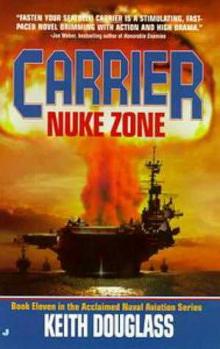 Nuke Zone c-11
Nuke Zone c-11 Seal Team Seven 6 - Battleground
Seal Team Seven 6 - Battleground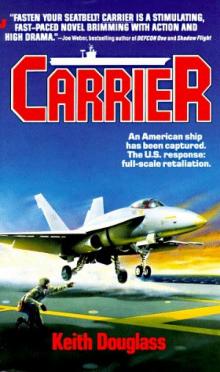 Carrier c-1
Carrier c-1 Island Warriors c-18
Island Warriors c-18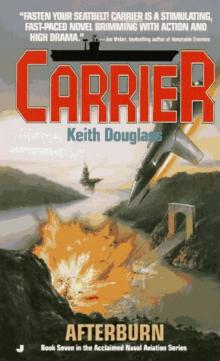 Afterburn c-7
Afterburn c-7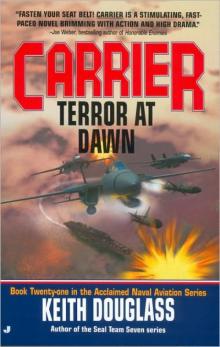 Terror At Dawn c-21
Terror At Dawn c-21 Specter sts-2
Specter sts-2 Joint Operations c-16
Joint Operations c-16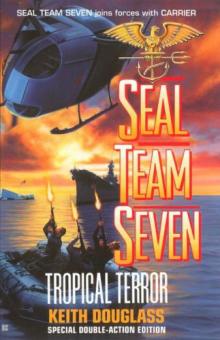 Tropical Terror sts-12
Tropical Terror sts-12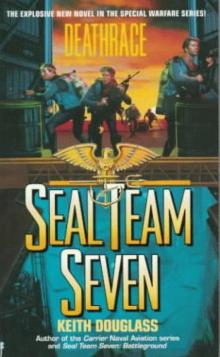 Seal Team Seven 7 - Deathrace
Seal Team Seven 7 - Deathrace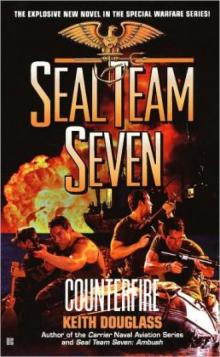 Counterfire sts-16
Counterfire sts-16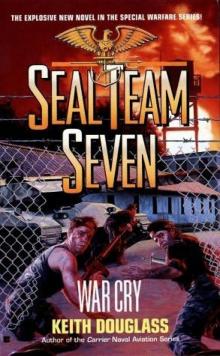 War Cry sts-9
War Cry sts-9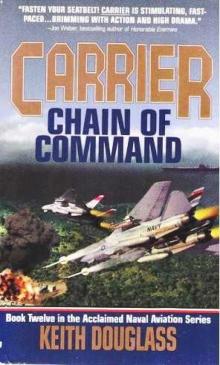 Chain of Command c-12
Chain of Command c-12 Brink of War c-13
Brink of War c-13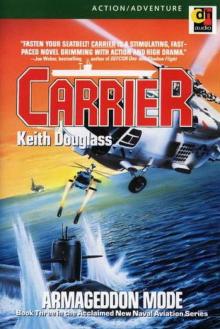 Armageddon Mode c-3
Armageddon Mode c-3 Arsenal c-10
Arsenal c-10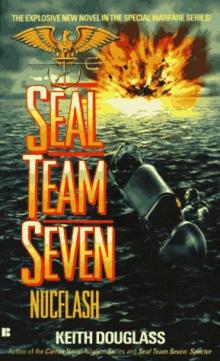 Nucflash sts-3
Nucflash sts-3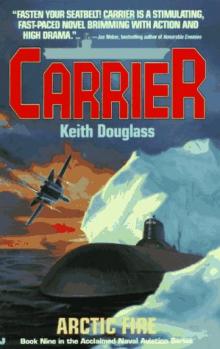 Arctic Fire c-9
Arctic Fire c-9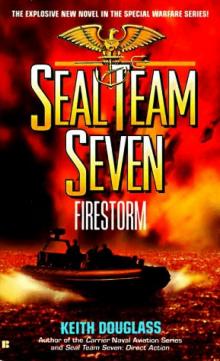 Firestorm sts-5
Firestorm sts-5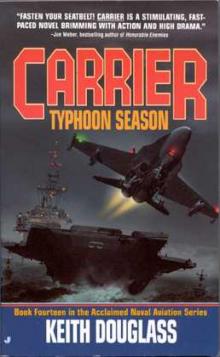 Typhoon Season c-14
Typhoon Season c-14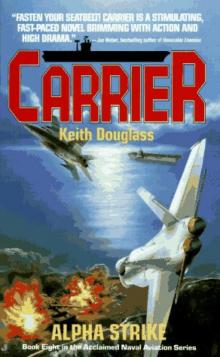 Alpha Strike c-8
Alpha Strike c-8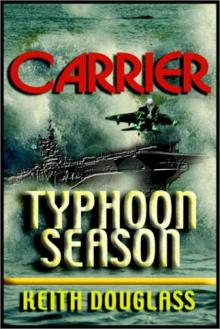 Carrier 14 - TYPHOON SEASON
Carrier 14 - TYPHOON SEASON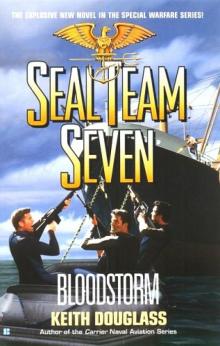 Bloodstorm sts-13
Bloodstorm sts-13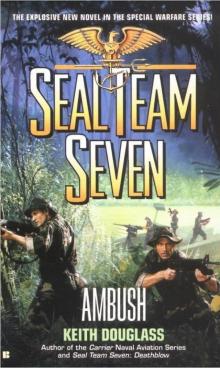 Ambush sts-15
Ambush sts-15 First Strike c-19
First Strike c-19 Flame Out c-4
Flame Out c-4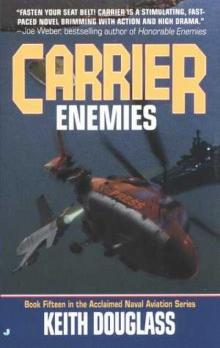 Enemies c-15
Enemies c-15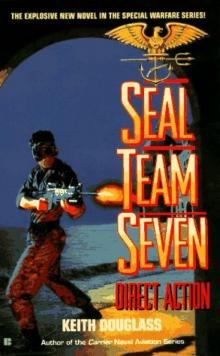 Seal Team Seven 04 - Direct Action
Seal Team Seven 04 - Direct Action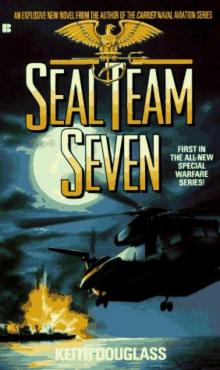 Seal Team Seven 01 - Seal Team Seven
Seal Team Seven 01 - Seal Team Seven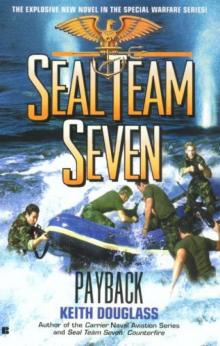 Payback sts-17
Payback sts-17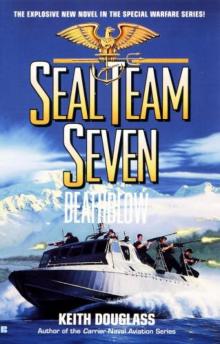 Death Blow sts-14
Death Blow sts-14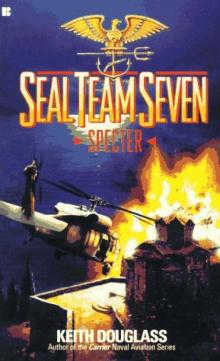 Seal Team Seven 02 - Spector
Seal Team Seven 02 - Spector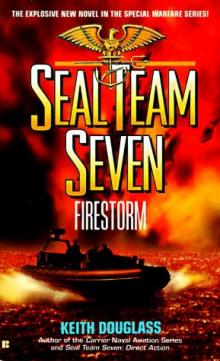 Seal Team Seven 5 - Firestorm
Seal Team Seven 5 - Firestorm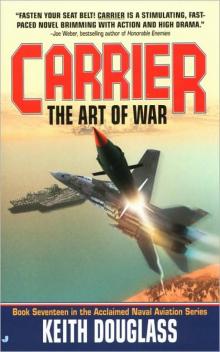 The Art of War c-17
The Art of War c-17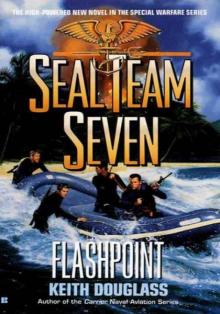 Flashpoint sts-11
Flashpoint sts-11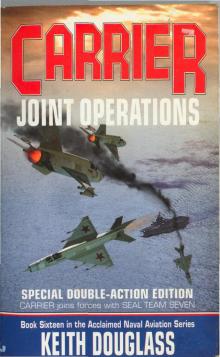 Carrier - Joint Operation Book 16
Carrier - Joint Operation Book 16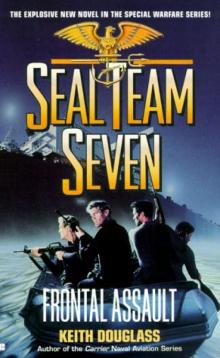 Frontal Assault sts-10
Frontal Assault sts-10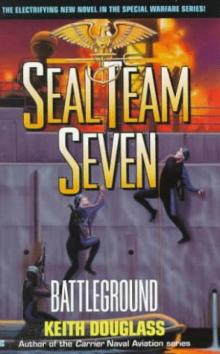 Battleground sts-6
Battleground sts-6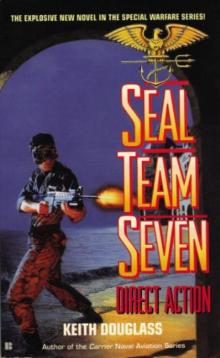 Direct Action sts-4
Direct Action sts-4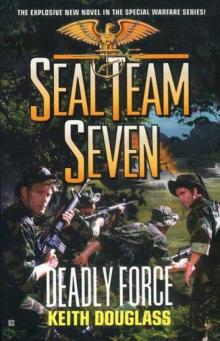 Deadly Force sts-18
Deadly Force sts-18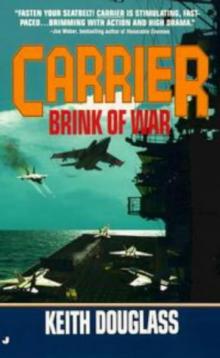 Carrier 13 - Brink of War
Carrier 13 - Brink of War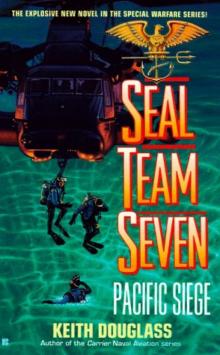 Pacific Siege sts-8
Pacific Siege sts-8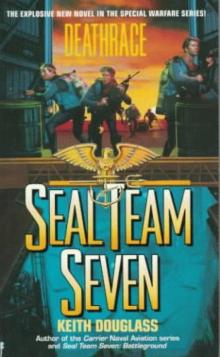 Deathrace sts-7
Deathrace sts-7